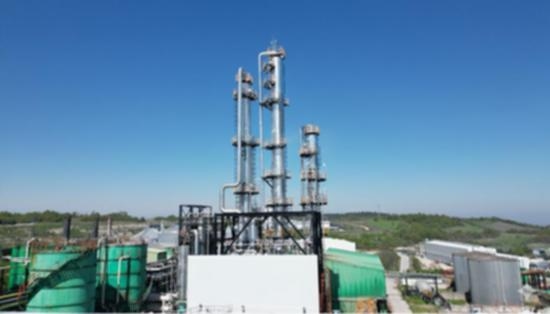Bioethanol Producers Are Operating Below Production Capacity

Category: ENERGY AGENDA , OIL and FUEL SECTOR - Date: October 21, 2025
The blending ratios of bioethanol, which is blended into gasoline for reasons such as reducing carbon emissions, preventing fuel imports, and supporting agricultural production, are being debated. The Bioethanol Producers Association stated that the 2% blending ratio set by the Energy Market Regulatory Authority (EPDK) is forcing producers to downsize, stating, “We are only able to utilize 150,000 cubic meters of our annual production capacity of 215,000 cubic meters. Bioethanol is derived from agricultural products. When blended with gasoline, it also eliminates oil imports. The blending ratios of bioethanol, which supports agricultural production and employment and reduces the current account deficit, should be increased.”
Bioethanol, blended with gasoline as a fuel additive in many countries around the world, is produced from corn, sugar beets, sugar cane, and agricultural waste. Its high octane rating burns more efficiently than petroleum-based fuels. When blended with gasoline, bioethanol reduces carbon emissions and prevents the release of harmful NOx gases. While bioethanol is blended with gasoline derivatives at a rate of 5% to 10% in European Union (EU) member states, it is blended with gasoline at a rate of 2% in Türkiye.
Vedat Aydınoğlu, Vice President of the Bioethanol Producers Association, stated that capacity utilization in bioethanol production is gradually decreasing, saying, " With a 2 percent blending rate, we can only use 150,000 cubic meters of our annual production capacity of 215,000 cubic meters."

Vedat Aydınoğlu, Vice President of the Bioethanol Producers Association
Vedat Aydınoğlu, Vice President of the Bioethanol Producers Association of Turkey, said, “ The annual production capacity of the four largest producers affiliated with the Turkish Bioethanol Producers Association exceeds 215,000 cubic meters. With the current 2% blending rate, the bioethanol we supply to the domestic market is around 150,000 cubic meters annually. This prevents producers from using their capacity efficiently, halts new investments, and prevents our farmers from producing. Bioethanol, which is of agricultural origin, is produced primarily from corn and sugar beets in our country. The corn and sugar beets harvested through the labor of our farmers are converted into bioethanol and blended with gasoline. Bioethanol, which replaces an average annual gasoline consumption of 150,000 cubic meters, can prevent $125 million in oil imports. By increasing the bioethanol blending rate to 5%, as in EU countries, we can prevent oil imports, encourage our farmers to produce more, and support agricultural production and employment.”
Bioethanol reduces carbon emissions and positively affects vehicle performance.Aydınoğlu emphasized that bioethanol is a fuel additive with a high octane rating, saying, " Bioethanol, which has been used for many years in many countries around the world with blending rates much higher than in Turkey, is quite safe. Bioethanol, with its high octane rating, reduces carbon emissions by providing more efficient combustion and prevents the release of solid particles and NOx gases that are harmful to human health. Because of its high octane rating, bioethanol is also used for performance purposes in motorsports. When blended, it will positively impact vehicle performance and increase fuel efficiency."
Published by: Alperen ERTAŞ- [email protected]
enerjigazetesi





